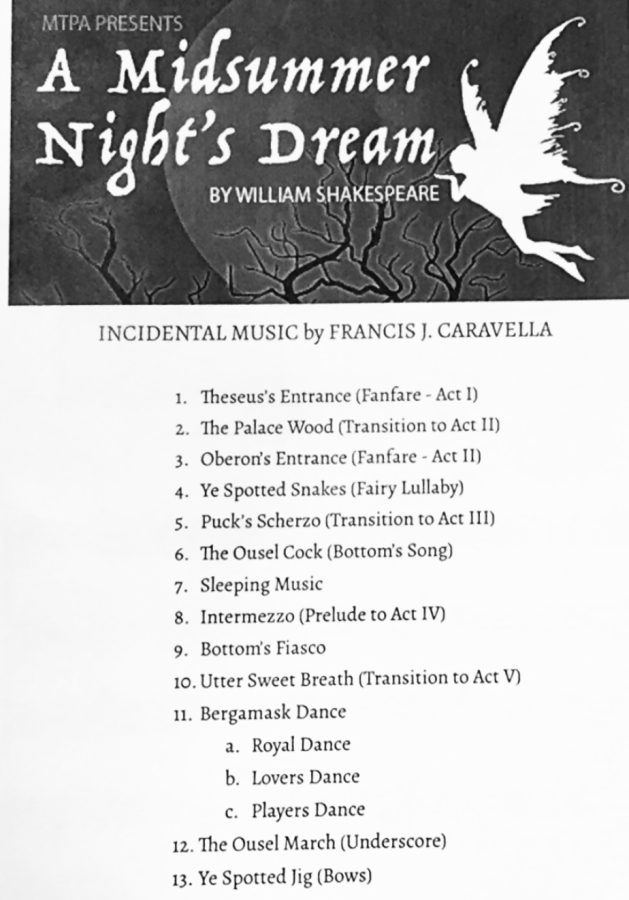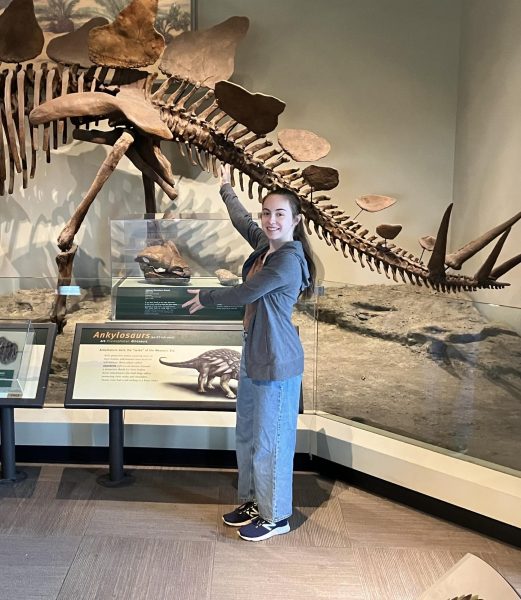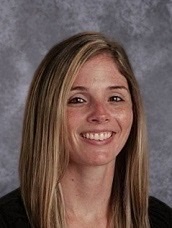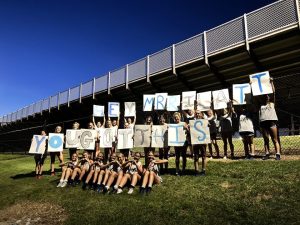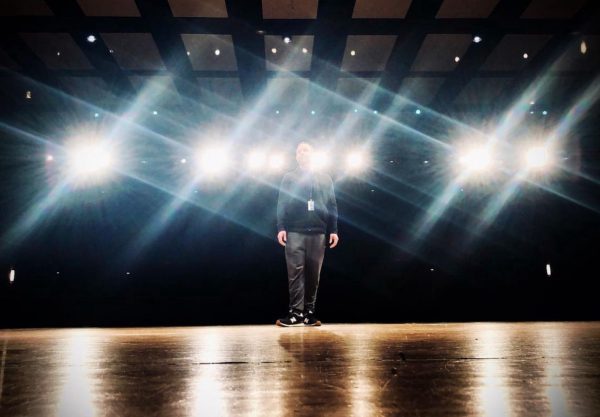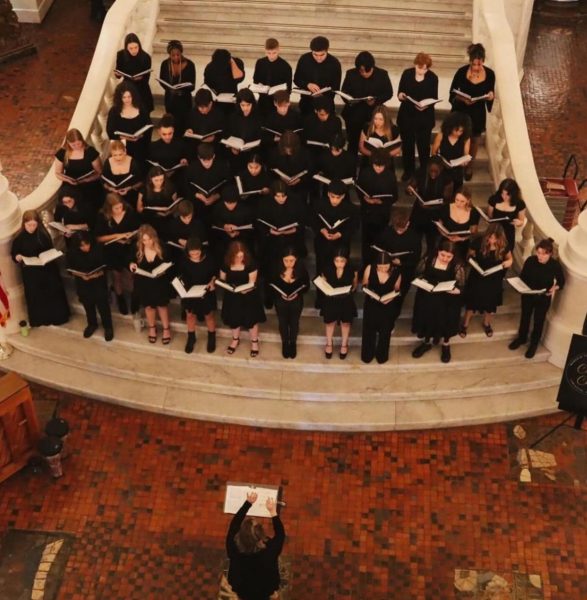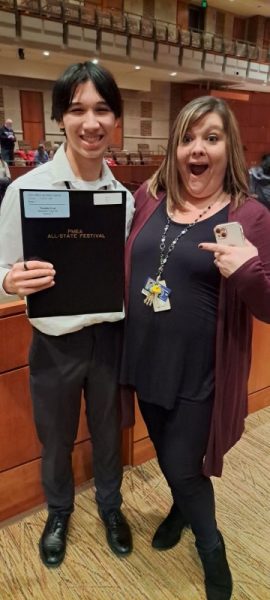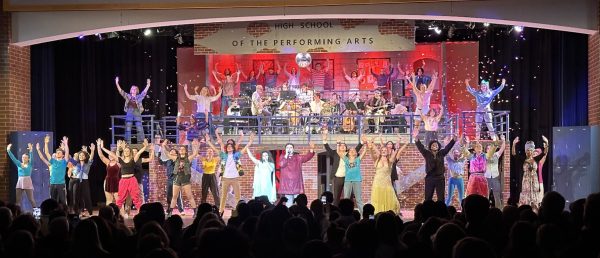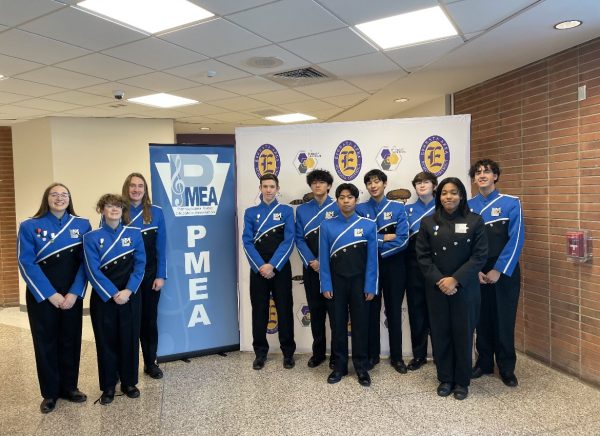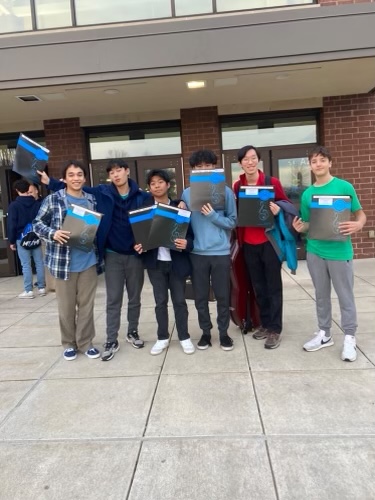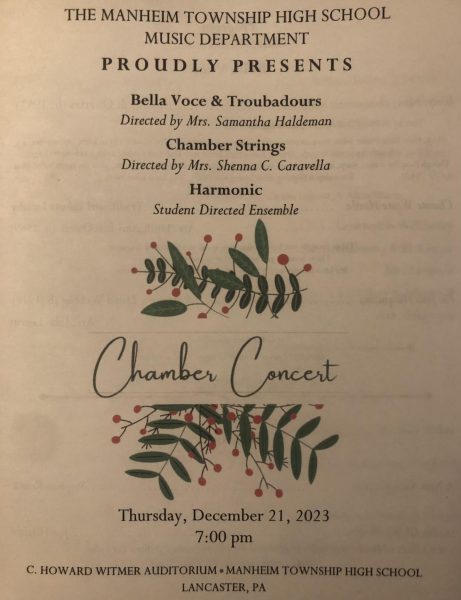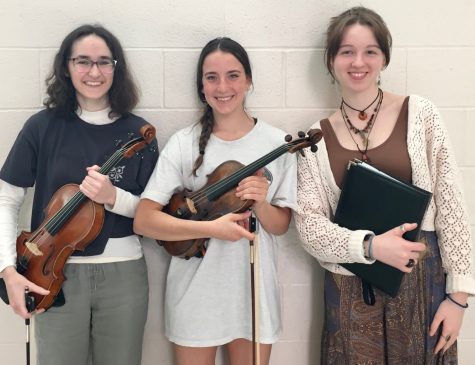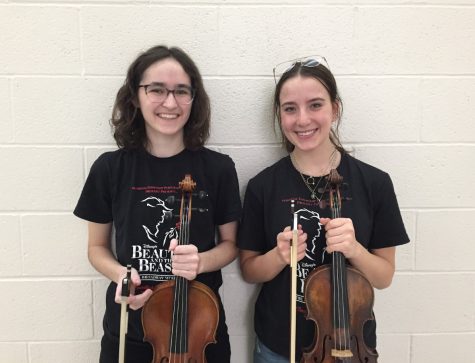Shakespeare: Magic, Mayhem, and…Music?
November 17, 2022
Announcements, flyers, and t-shirts advertising A Midsummer Night’s Dream abound throughout the school. Eagle-eyed students and staff might notice a curiosity in the promotions: they list a musical score! Although not typically associated with Shakespeare, the music added to this play enhances it and increases its excitement.
Believe it or not, spicing up A Midsummer Night’s Dream with incidental music—music that enhances media that is not originally musical, like plays—is not a unique idea. Numerous composers have written incidental music for this play, the most notable of which was Mendhelsson, centuries ago in 1842. In fact, the play production originally intended to use Mendhelsson’s incidental music. However, when asked about the music, orchestra conductor and composer Mr. Caravella saw an opportunity to write original music for MTPA’s production of the play and to involve some of our musicians. He wrote thirteen original pieces for the play and the rest was (or at least, will soon be) history.
Mr. Caravella’s first mission was to decide the style, tone color, instruments, and musicians for the job. He knew that he wanted a string quartet for the core of the composition, which made the choice of musicians simple: only the best string players would do. He selected Ali Bube, concertmaster and incredibly skilled violinist; Oskar Filippo, another competent violinist and enthusiastic learner; Nora Lowther, principal violist and gifted pianist; and My-Tam Huynh, principal cellist. With his musicians selected, Mr. Caravella faced another challenge: tone color. Strings, while beautiful, have a distinct and “monochromatic” tone color, but Mr. Caravella wanted a vibrant score. He envisioned that “any time they’re in the Duke’s palace, which is Act 1 and Act 5, we’re just going to keep it [as a] string quartet and formal. But then when they go into the woods…that’s when I want it to get [colorful].” Strings alone wouldn’t give him more color—but branching out into other instruments would.
Although Mr. Caravella selected MT’s most talented string musicians, he needed them to play a variety of instruments outside of their comfort zones to achieve his vision. Each musician had to master the recorder and various percussion instruments. Huynh found the recorder “awkward at first” because, as a cellist, she was “not used to playing anything wind-related.” Some musicians faced even more daunting challenges: Filippo tackled both the mandolin and the saw. He described learning the mandolin as “nerve-wracking” and the saw as “one of the biggest learning curves I’ve gone through this year,” and with good reason. Playing the saw requires the musician to curve the metal instrument at exactly the right angle to produce the desired pitch. Despite their difficulties, the musicians triumphed and enjoyed their newfound abilities. Filippo recounted that learning the saw “was one of the coolest things I’ve ever done,” and Huynh found the recorder fun to learn, recounting that “It’s kind of like fourth grade music again!”
Armed with knowledgeable musicians and a variety of tone colors, Mr. Caravella had to select the style of the music. He deliberated over which style to select, considering “1960s music … and .. 1920s music … or … [marrying] the music to the language and make it sound kind of renaissance-y.” In the end, he opted for a renaissance-inspired style. Huynh described the music as “medieval-esque,” and Filippo compared it to “music reminiscent of the 15-1600s.”
With his style, tone color, instruments, and musicians selected, all Mr. Caravella had to do was write thirteen entire pieces to complete the incidental music. Of the thirteen pieces that the audience will enjoy, there are two highlights: Ye Spotted Snakes and the Bermask Dance. Ye Spotted Snakes features color-adding instruments like the saw and the mandolin and, according to Bube, is “a unique piece and so fun to play.” The Bermask Dance is a lively and exciting piece featuring the strings’ fast fiddling talents, which Huynh described as “an energetic accompaniment.”
Overall, the hard-won incidental music included in MTPA’s production of A Midsummer Night’s Dream adds emotion and excitement to the play. Musicians, instruments, tone color, and style choices all combine to create a unique setting for this production. Mr. Caravella remarked that “it’s hard for me to imagine this play without this music,” and viewers will find this music-embellished play to be a unique and unforgettable experience. In the end, the ultimate goal of this play is to entertain its audience, and the incidental music adds just that. As explained by Fillipo, “it’s the kind of music that you can just sit back and enjoy… it’s an altogether fun thing to witness.”
To experience the play and its incidental music, buy tickets at https://www.showtix4u.com/event-details/67619 for 11/17, 11/18, or 11/19 (this Thursday, Friday, or Saturday).


